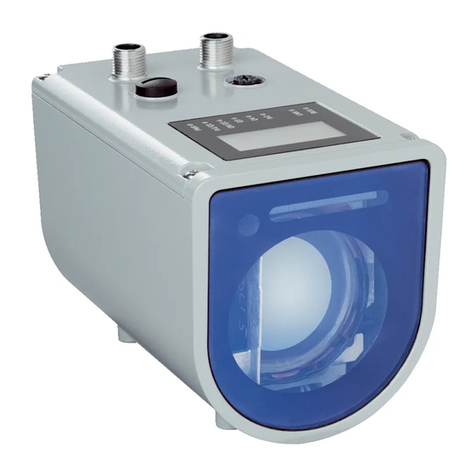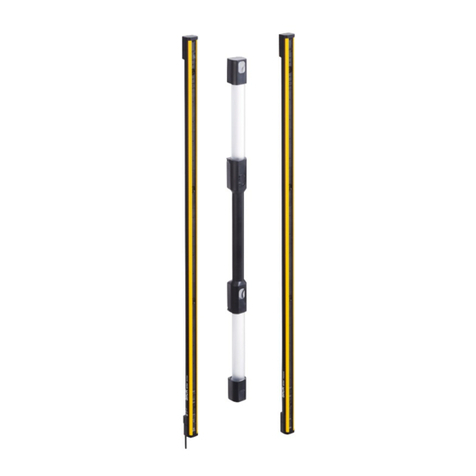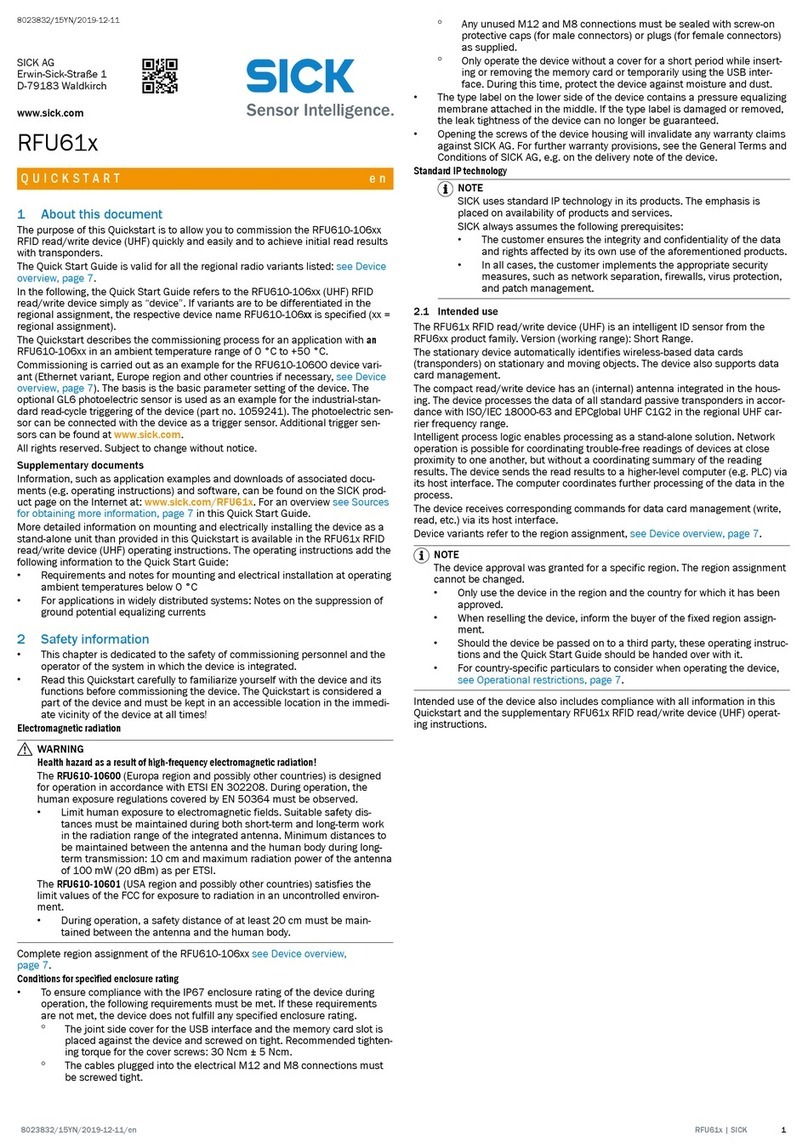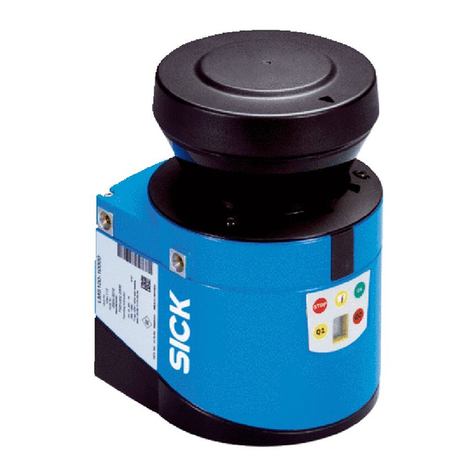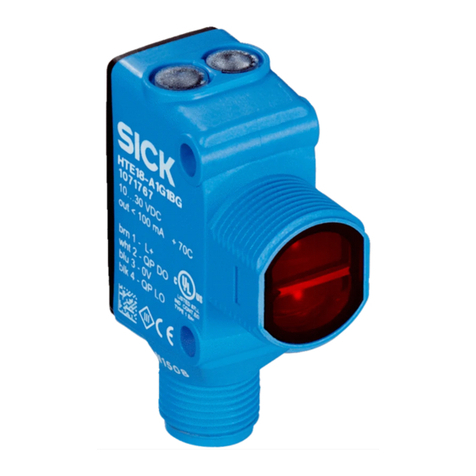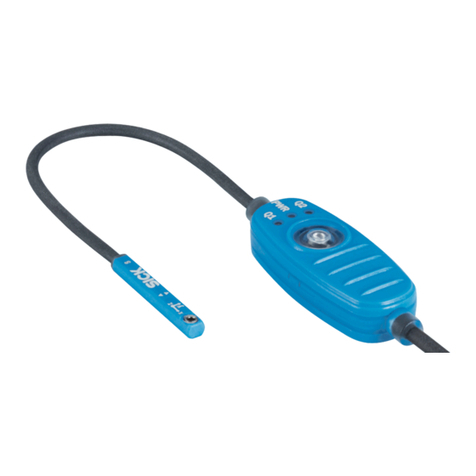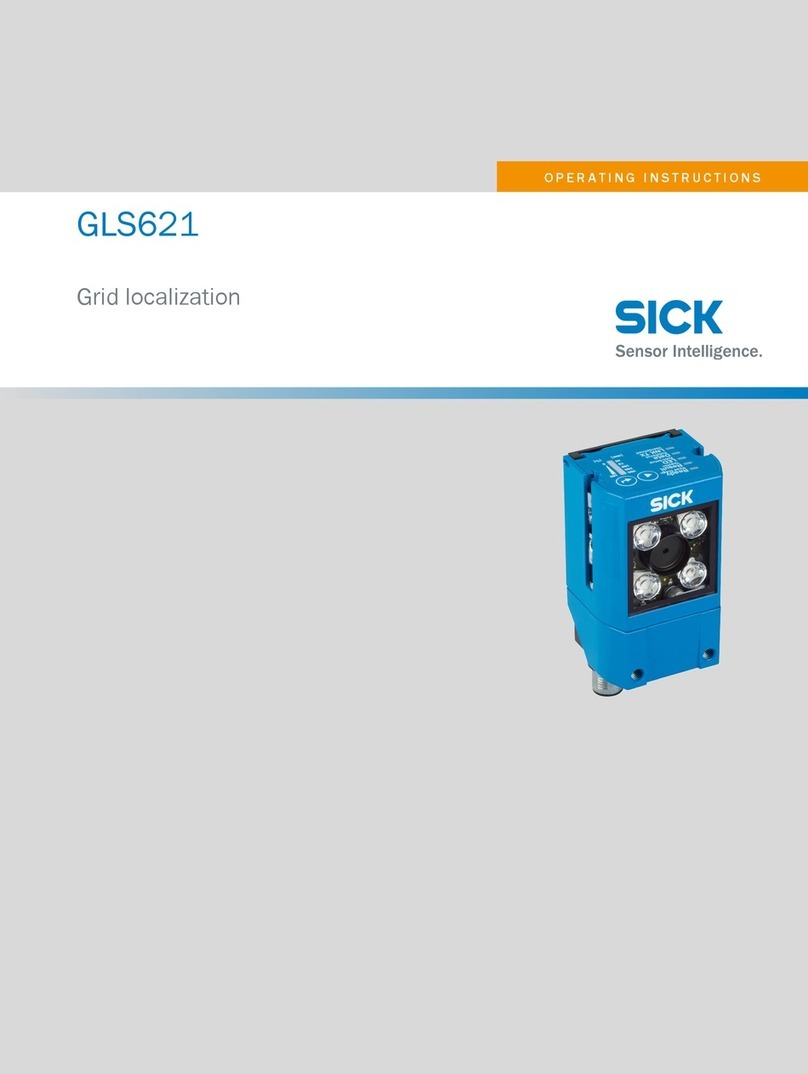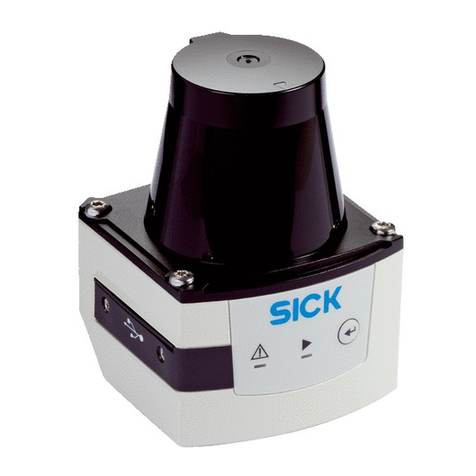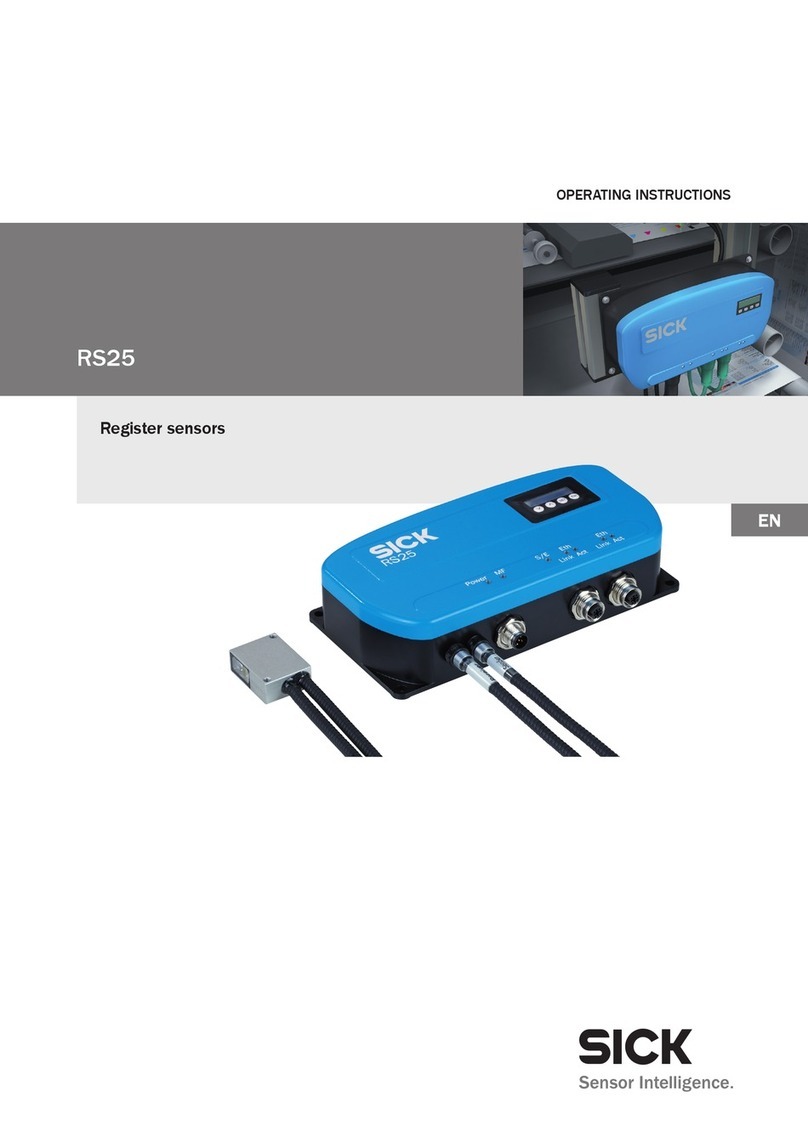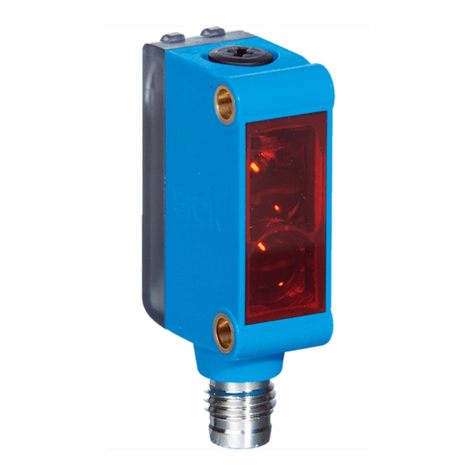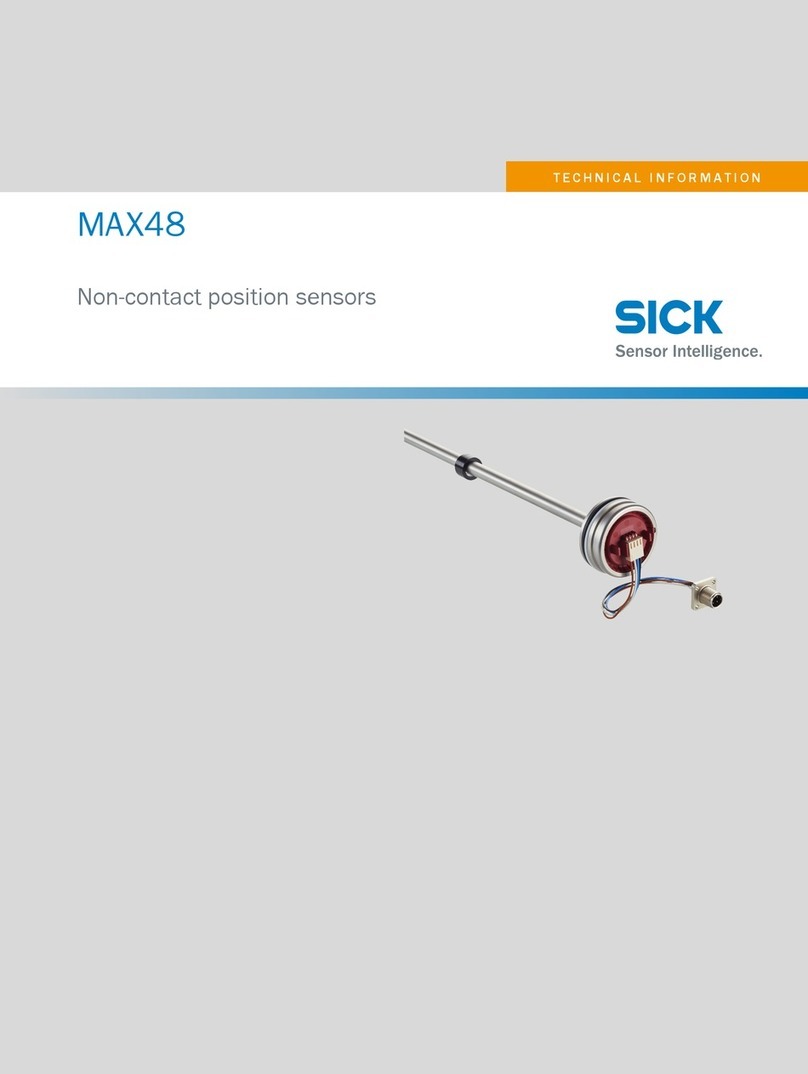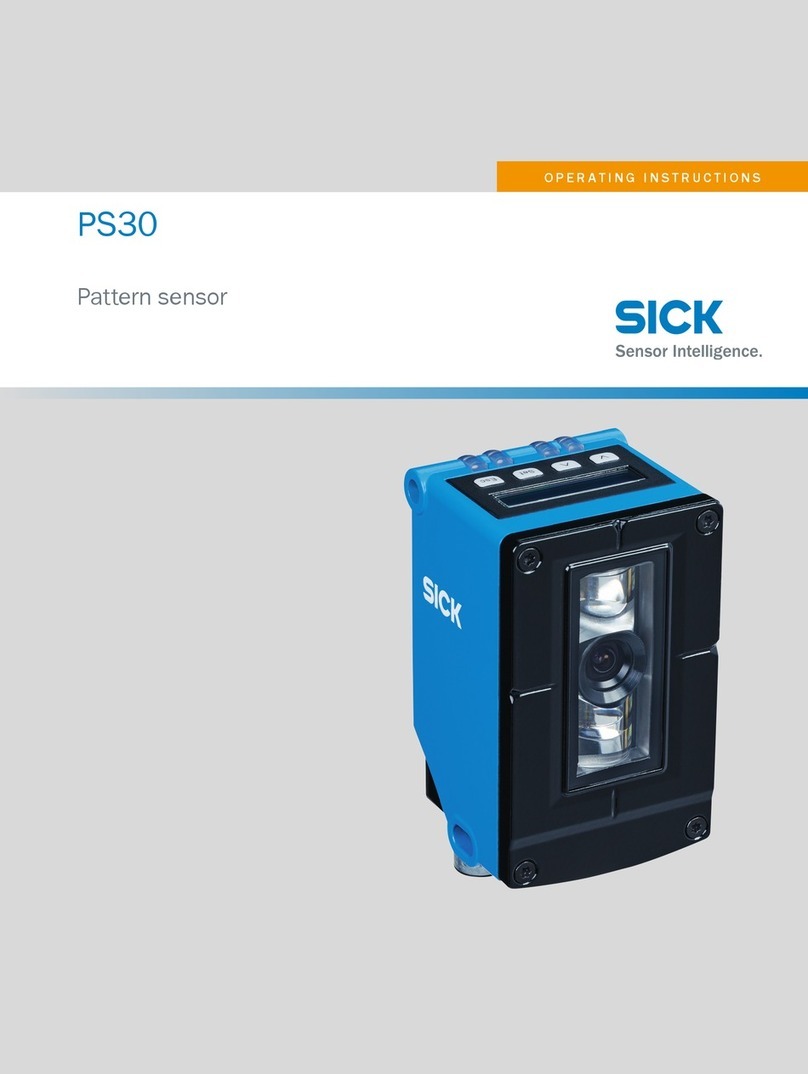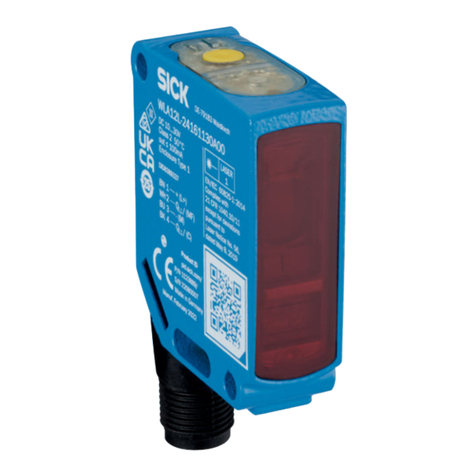
Advertisement LED Color Status
Lights up Yellow Over SOPAS ET A function is started manually,
which requires a memory card; however, the
microSD memory card is not ready for operation
(e.g., not plugged in, contacts contaminated, or
without free storage space for writing).
3.3 microSD memory card (optional accessory)
The device can execute the following functions on the plug-in memory card:
•Automated, additional storage of the internal parameter set to an external
storage medium (cloning function), if available. This is done in the framework
of the recommended safety concept for the device parameter sets. The func‐
tion is triggered by saving the internal parameter set with the “permanent”
option. The function is used,among other things, to conveniently transfer the
parameter set to an replacement device of the same type in the event of an
fault.
•Continuous recording of diagnostic read data after the first manual start,
e.g., via SOPAS ET. Recording is resumed after a device restart when the
function is set permanently.
The first time a parameter set is stored, we recommend that an empty memory
card is used (if necessary, check and delete the contents of the card on the PC
using a card reader).
The memory card is not included with delivery.
Only use types approved by SICK to ensure reliable function of the memory card,
see www.sick.com/RFU61x. The memory card has no write protection that can be
activated.
Inserting the memory card
The card slot can be accessed on the device behind the plastic foil, see Device
description, page 1.
Maintaining enclosure rating IP67: see Safety information, page 1.
1. Switch off the supply voltage to the device.
2. Loosen both screws on the cover.
3. Carefully fold up the cover.
4. Making sure it is in the correct position (with the contacts pointing to the
front and down – see the symbol on the device), insert the memory card into
the card slot until it locks into place.
5. Screw the cover back on.
6. Switch the supply voltage for the device back on.
7. Once it is switched on, the device automatically detects the presence of a
memory card and, depending on the card’s content, behaves as follows:
°If the card is empty or if it contains a parameter set that cannot be
interpreted by the device, the device saves its currently valid internal
parameter set to the card (provided there is sufficient storage space)
and starts with the internal parameter set.
°If the card contains a parameter set that can be interpreted by the
device, the device overwrites the currently valid internal parameter set
with this external parameter set.
The goal is for the internal parameter set and the parameter set saved
externally to always be identical.
NOTE
Possible data loss or irreparable damage to the memory card!
The device does not signal access to the card.
•Only use memory card when the device power is off.
•Do not remove the memory card or switch off the supply voltage while
the SOPAS ET configuration software is making changes to the parame‐
ter values with the “permanent” option or starting functions in the
device that access the memory card (e.g., logging data).
•To remove the memory card safely during operation, select the Remove
card function under Analysis Tools/MicroSD memory card and wait for
SOPAS ETto provide confirmation.
4 Mounting
4.1 Scope of delivery
•Device in the version ordered. Electrical connections fitted with protective
caps or plugs. Without connecting cables. Without brackets.
•Regional printed Quickstarts: see Device overview, page 6. Other lan‐
guage versions may be available in PDF format on the RFU610-106xx prod‐
uct page online at: www.sick.com/RFU61x.
4.2 Auxiliary equipment required
•2 x M5 screws for mounting the device on a mounting device (bracket) sup‐
plied by the customer. Screw length is dependent on the mounting base (wall
thickness of the bracket).
•When using an optional SICK bracket, the screws for mounting the device on
the bracket are included in the scope of delivery of the bracket.
4.3 Installation requirements
•The permissible ambient conditions for operating the device must be
observed, e.g., assigned region, ambient temperature, ground potential: see
Technical data (excerpt), page 5 and see Electrical installation,
page 2.
•The device must be mounted using the 2 M5 blind tapped holes provided,
see Device description, page 1.
•Stable mounting equipment with sufficient load-bearing capacity and appro‐
priate dimensions for the device. Weight approx. 313 g (without cables), see
Device description, page 1.
•No electrically conductive material between transponder and device.
4.4 Mounting the device
1. Select a suitable mounting location for the device. The mounting location
and position depend on the antenna field of the device and the transpon‐
ders used.
2. Perform one of the following steps:
°Mount the device on the bracket provided by the customer using the
2 screws. Screw the M5 screws no more than 7 mm deep into the blind
tapped holes, see Device description, page 1.
°Mount the device on the SICK mounting accessories ordered sepa‐
rately.
3. Align the surface of the internal antenna of the device (front face) to the
data card on the object. While doing so, take into account the shape, align‐
ment, and dimensions of the antenna fields. Avoid as far as possible any
large metal surfaces positioned to the front. If this is not possible, do not
mount the antenna plane parallel with the surface.
Figure 2: Selection of the approach angle with a large metal surface on the
front. e.g., 10°
1Metal surface
4. Ensure there is no electrically conductive material (e.g., metal or liquids) or
persons between the device and the transponder during the write or read
process. This will absorb or reflect the generated UHF field and thereby
reduce the sensing range.
Sensing range of the reading and writing field
The UHF field of the internal antenna is influenced by its environment, making it
impossible to provide a “clear” demarcation of the sensing range. Application-spe‐
cific reflections can result in both overreaches and “holes”. In addition to the read
results, the RFU device can also output diagnostic data that provide an indication
of the write and read quality. This data can be used to achieve optimum read
results when setting up the system.
The quality of the transponder and the material of the object also determine the
sensing range. The quality of the transponder is determined by the antenna gain,
the integrated transponder chip and the related sensitivity, and the reflected
energy.
The radiation pattern shown here for the internal antenna of the device was
obtained in a reproducible environment (absorber chamber) for illustrative pur‐
poses. It may therefore only have limited applicability to your specific application.
–33
–30
–27
–24
–21
–18
–15
–12
–9
–6
–3
0° 15°
30°
45°
60°
75°
90°
105°
120°
135°
150°
165°
180°
–165°
–150°
–135°
–120°
–105°
–90°
–75°
–60°
–45°
–30°
–15°
2
1
0
Figure 3: Measured antenna gain in dBic at 866.5 MHz, LHCP (left-hand circularly
polarized)
1Azimuth plane (horizontal)
2Elevation plane (vertical)
5 Electrical installation
•The electrical installation must only be performed by electrically qualified persons.
•Standard safety requirements must be observed when working on electrical systems!
•Only connect and disconnect electrical connections for the device when the
power is off. Otherwise, there is a risk of damaging the devices.
•When using connecting or extension cables with an open end, make sure
that bare wire ends are not touching (risk of short-circuit when the supply
voltage is switched on). Wires must be appropriately insulated from each
other.
•Wire cross-sections in the supply cable from the user’s power system must
be designed in accordance with the applicable national standards.
8023832//2019-04-15/en RFU610 | SICK 2

